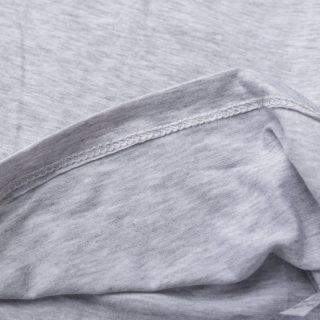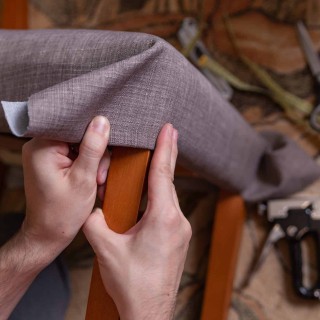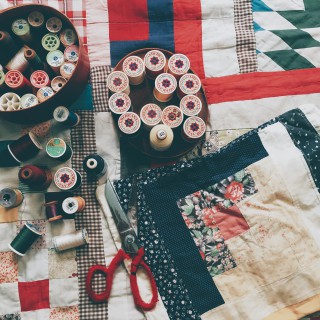Having a sewing room in tip-top shape can be really helpful in your sewing work. When we’re talking about hobbies, anything that makes it easier or more enjoyable is welcome, right?
Unfortunately, many beginners are at a loss when it comes to equipping their sewing room. This can really make it hard to do anything inside, and their rooms often end up very cluttered and work-repellent.
What you need are some sewing room ideas and inspiration, which I’ll share in this article. I want to help you design and equip your room so that you’ll enjoy being in it and working in it, which will definitely show in the pieces you produce.
A Big, Bright Room
Alright, so, the first thing you’ll have to take care of—and one of the foundations of a well-designed sewing room—is picking a well-lit room.
After all, you will be spending hours and hours leaning over your desk, pouring over fine detail such as threads, seams, fine print, and the like. If you have a bright, light-filled room, you’ll keep a lot of strain off your eyes (for which they will definitely thank you).
What many people don’t know is that most rooms can let in enough light inside, only you need to find the way. For example, move the curtains away. Some windows are also covered with UV filters, which, besides cutting down on the light that enters, also change the colors you see. So, open those windows and let all the natural light in!
Just make sure you close them after you finish work and pull back the curtains, because your material will fade if exposed to direct sunlight continuously.
Big Sewing Desk
Ahh, the item that separates pros from beginners. I don’t mean to be critical, but you must obtain a big sewing desk for your room. You’ll thank me later.
Those just starting out may try to find a desk they don’t currently use and move it to their sewing room. The idea seems fine at first glance, but usually these desks are far from suitable, especially when it comes to their size. This results in being unable to do any sewing there, because there’s just not enough space.
A dedicated big sewing desk will really enhance your workflow because it will hold your materials as well as all of your equipment within an arm’s reach. Do yourself a favor and get one.
Pegboard
When I was starting out, I soon found out that there’s simply no good horizontal space to keep my equipment.
I was lucky to go and visit a car repair shop, where I saw these vertical pegboards affixed to a wall that held servicemen tools attached and secure. So I decided to employ the same trick in my sewing room.
Basically, you need to find a pegboard that can hold your many different tools. They even can accommodate special shelves that attach to the holes. You can also add a horizontal shelf for scissors, pins, needles, and the like.
My pegboard is a great timesaver, and I wholeheartedly recommend that you get one.
Showroom Setup
When working on a piece, it is easy to get lost in the minutia and forget what this is all about: presentation. Yep, great clothes are all about presenting yourself in a great light. Why not employ this fact when designing your sewing room too, then?
What I mean here is that you should organize your room so that you can hang out & show your creations like one would in a tailor. Find a mannequin, hangers, and a drawer – basically a space where you could set your pieces for a show.
This applies even if this show is for your eyes only, because you are also the one that needs to see how that piece fits a model.
Shelves
Cabinets are great, but if you have to constantly open them to access their contents, this will slow down your workflow. The solution for frequently used items, that you want to keep off the top of your sewing table? Shelves.
Hangers & Wall Storage
Floating shelves, hanger bars, wall-to-wall shelves—these are all smart ways to use up that free space on your wall. The idea here is to declutter the floor and corners, while also putting these objects in a very reachable position.
Storage Baskets
I can never get enough storage baskets.
Typically, I have at least two beside me when I’m working. One is for anything that I need quick access to while I’m working, so that I don’t have to look around for them all the time. The second is for trash.
I have several other baskets for various stuff & materials all around the room. These are most often made out of bamboo.
Sewing Kit Organizer
Even if you are rather new to sewing, you’ve probably already noticed that your seam ripper took a tour of your house and hid under the rug—in the other room.
Needles and pins disappearing, scissors falling off the desk edge and putting holes in your carpet, buttons and fasteners getting all tangled up—a pretty normal day for a hobbyist sewer, unless you get yourself a sewing kit organizer.
Once you do, all these problems will be cut by 90%. You’ll still have the occasional moonwalk around the house to locate the seam ripper, but if you adhere religiously to keeping your stuff where it belongs (in the organizer), you will have a very organized and enjoyable sewing desk.
Idea & Mood Board
Sometimes, we just tire of looking at the scribbles in our notebook or the various pieces of paper we have spread on the desk. Sometimes, it’s just great to see all those ideas on paper in a collage before us, where we can move them, add new ones, and remove old ones.
Well, the purpose of an idea/mood board is to facilitate exactly this. You can use post-its and pins to build your board, piece by piece. Attach printouts, cuts from your favorite sewing magazine, and anything else that’ll add to the magic.
When I’m out of inspiration, I just sit, look at my inspiration board, and meditate. This process always helps me, and I typically get a great new idea after some time of gazing at the board.
Drawers & Caddies
Finally, no professional or amateur sewer can do without caddies and drawers. I don’t need to go into too much detail explaining why you need these, as this is surely obvious to you.
Just try not to make a mess inside. Get some separators that will help you sort the elements you need, and it works best if you group them either by component (e.g. threads, needles, pins, fabrics, buttons, etc.) or by the fashion/style of the clothing (e.g. serious, fun, outdoorsy & sporty, classic, vintage, etc.).
A decluttered space helps declutter the mind. Use that free space to make the best pieces of clothing you can imagine.
Final Thoughts
I hope I made it clear in the intro that having a well-organized and thought-out room can really improve your enjoyment of this hobby.
When going about designing or reordering my sewing room, the general rule I use is that everything must be within reach. Anything that’s further than a couple of steps, and I simply end up forgetting about and not using it.







